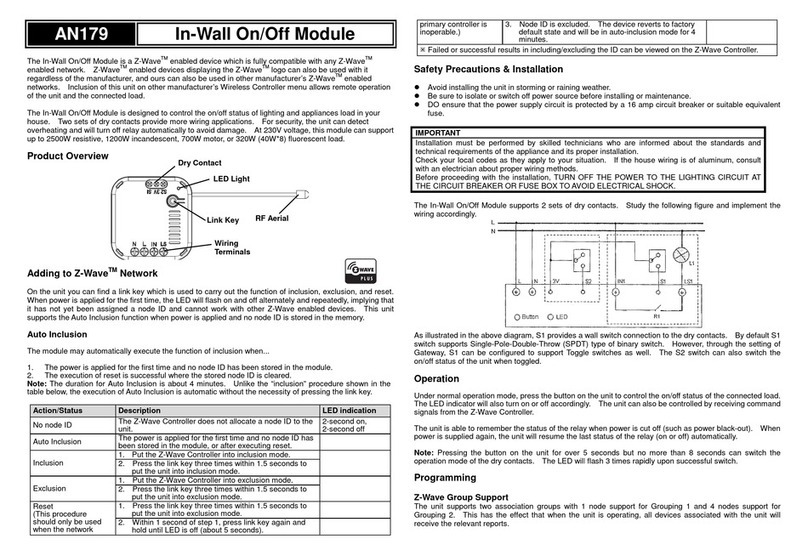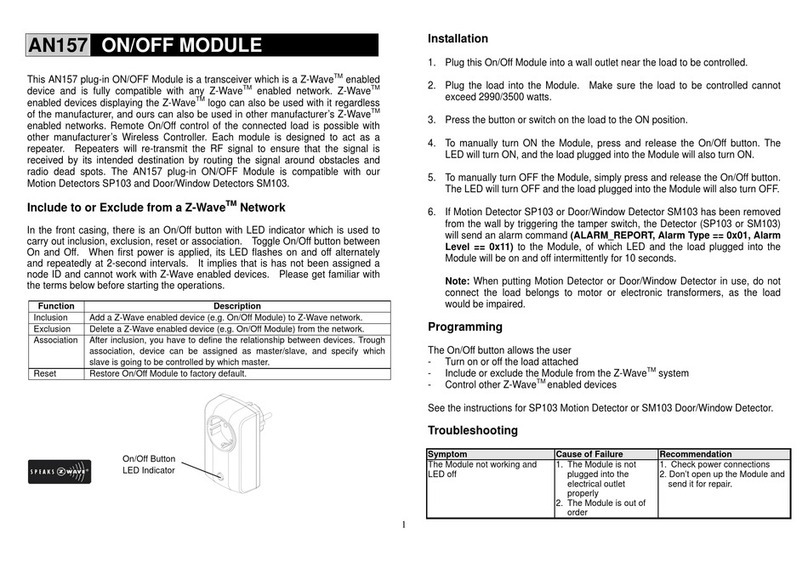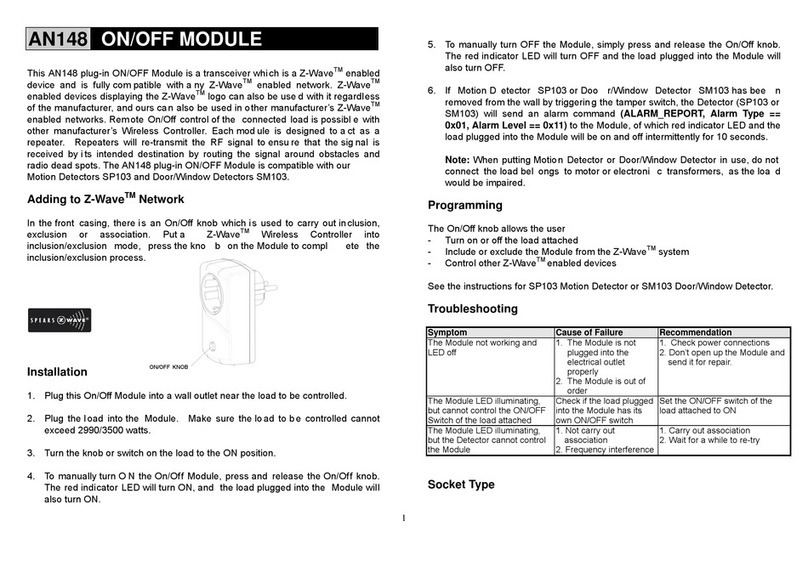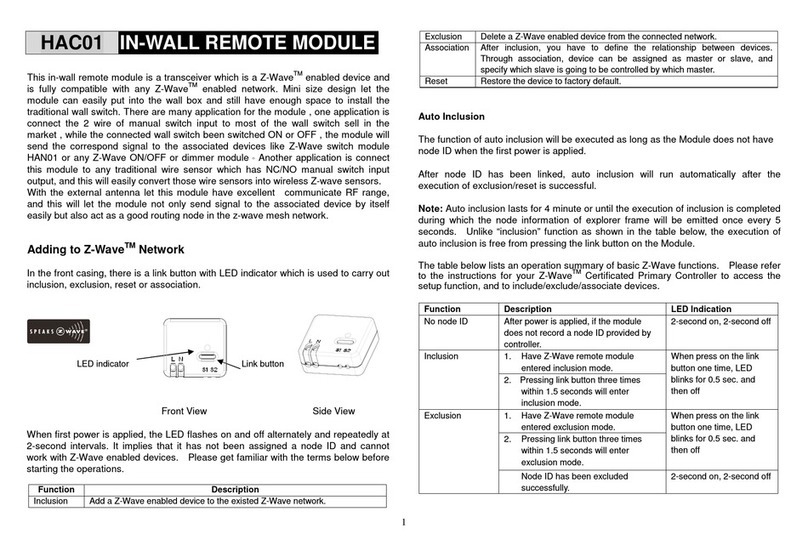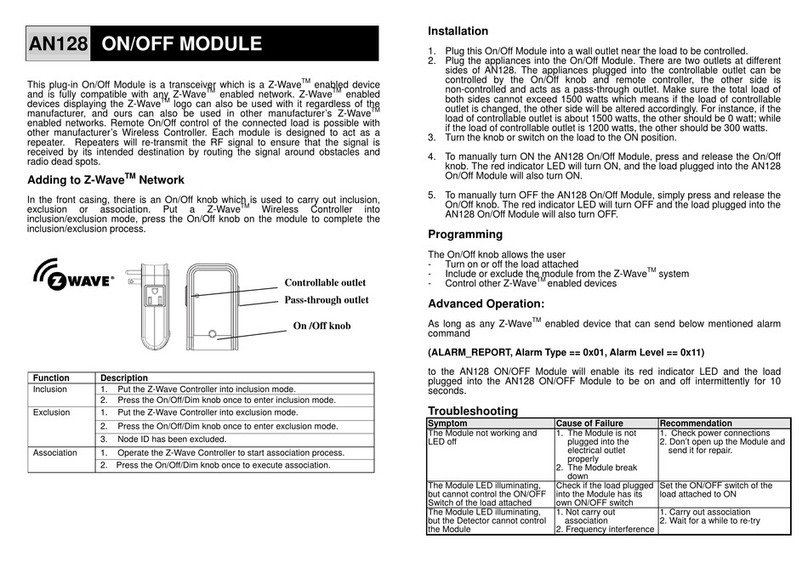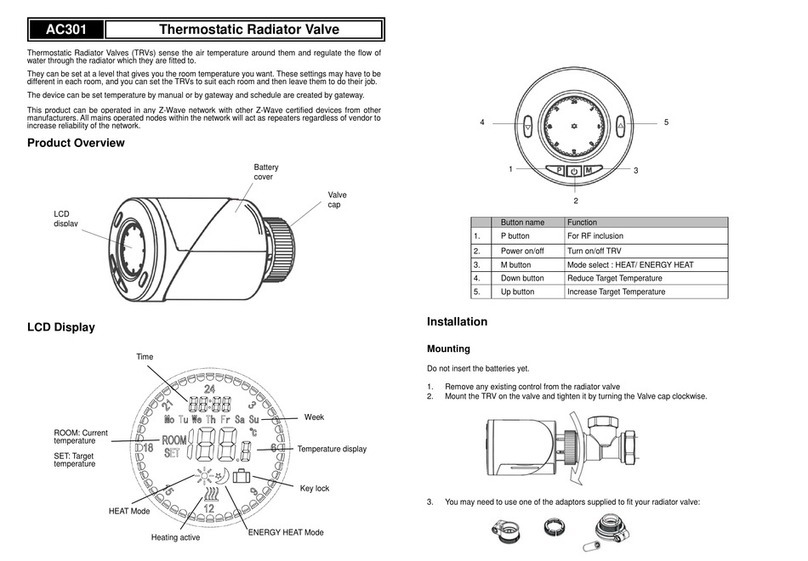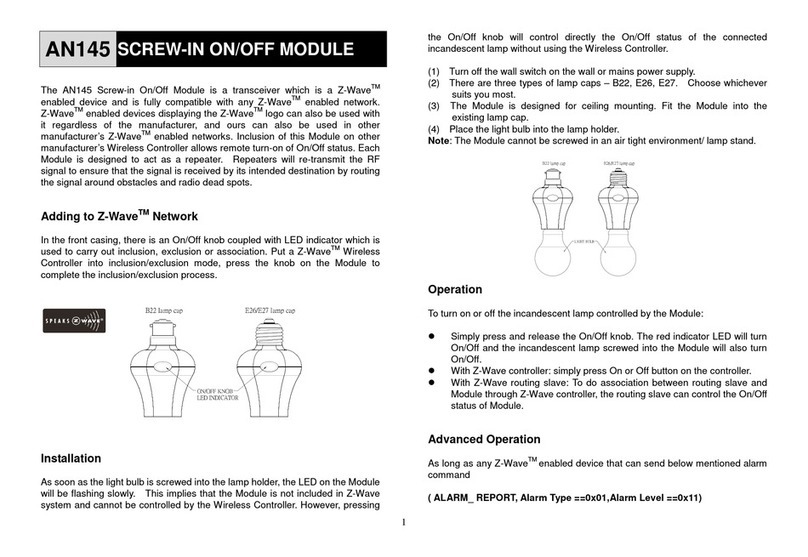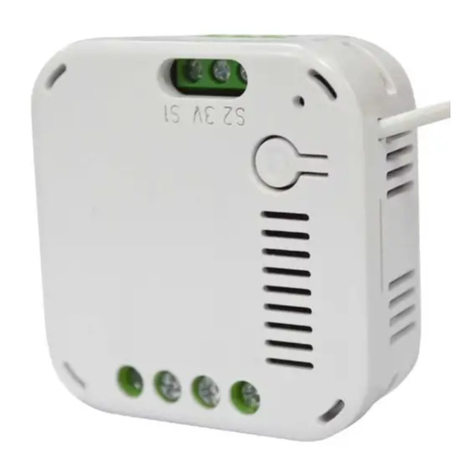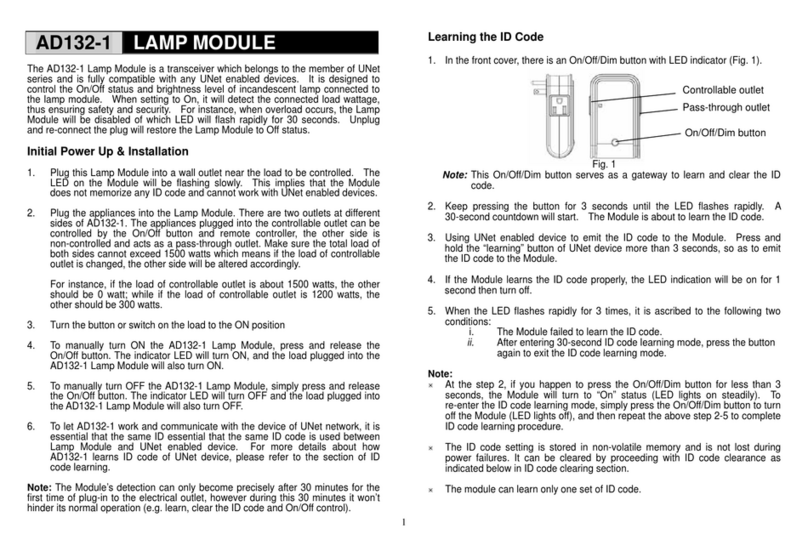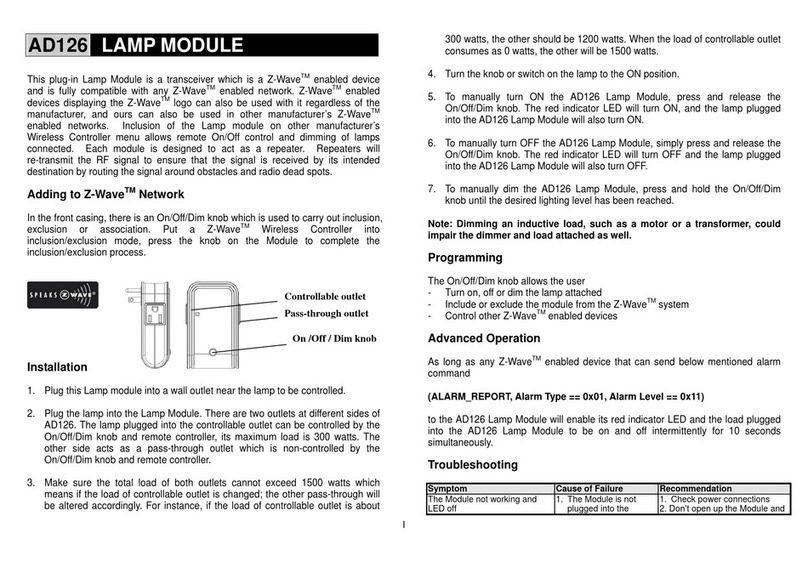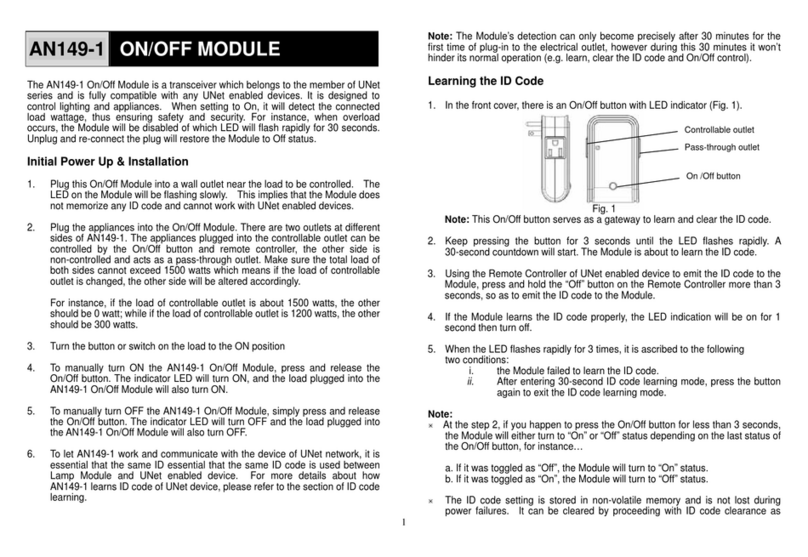
2
( ALARM_ REPORT, Alarm Type ==0x01,Alarm Level ==0x11)
to the Screw-in On/Off Module will enable its red indicator LED and the load
plugged into the Module to be on and off intermittently for 10 times.
Programming
The On/Off knob allows the user
- Turn on or off the load attached
- Include or exclude the Module from the Z-Wave
TM
system
Troubleshooting
The module not
working and LED
off
1. Poor connection
between lamp cap
mounted ceiling and
lamp cap of the lamp
holder
2. The module break
down
1. Check if the lamp cap of
mounted ceiling fits well
into the module
2. Don’t open up the module and
send it for repair
The module’s LED
working, but the
not working
1. Light bulb has burnt
out
2. Poor connection or
improper assembly
between lamp cap of
the light bulb
holder of the module
3. The module break
down
1. Replace a new bulb
2. The light bulb has screwed
tightly to the lamp holder of the
module
3. Don’t open up the module and
send it for repair
The LED on the
module working,
but the module
cannot control
Motion Detector
SP103 and
Door/Window
Detector SM103
1. Not carry out
association
2. Same frequency
interference
1. Carry out the association
2. Wait for a while to re-try
Specification
Operating Voltage /
Type of Lamp Cap
AN145-1 120VAC/60Hz E26
AN145-2 230VAC/50Hz E27
AN145-4 230VAC/50Hz B22
Maximum Load 70 Watts incandescent
Operating Temperature 0
°
C~40
°
C
Operating Humidity Range
85%RH
Receiving Range 30 meters min. line of sight
Frequency Range 908.42MHz (US) / 868.42MHz (EU)
FCC ID FU5TR003-04
* Specifications are subject to change and improvement without notice.
A501111195R02 2013/10
Federal Communication Commission Interference Statement
This equipment has been tested and found to comply with the limits for a Class
B digital device, pursuant to Part 15 of the FCC Rules. These limits are
designed to provide reasonable protection against harmful interference in a
residential installation. This equipment generates, uses and can radiate radio
frequency energy and, if not installed and used in accordance with the
instructions, may cause harmful interference to radio communications.
However, there is no guarantee that interference will not occur in a particular
installation. If this equipment does cause harmful interference to radio or
television reception, which can be determined by turning the equipment off and
on, the user is encouraged to try to correct the interference by one of the
following measures:
-
Reorient or relocate the receiving antenna.
- Increase the separation between the equipment and receiver.
- Connect the equipment into an outlet on a circuit different from that to which
the receiver is connected.
- Consult the dealer or an experienced radio/TV technician for help.
This device complies with Part 15 of the FCC Rules. Operation is subject to the
following two conditions: (1) This device may not cause harmful interference,
and (2) this device must accept any interference received, including interference
that may cause undesired operation.
FCC Caution: Any changes or modifications not expressly approved by the party
responsible for compliance could void the user's authority to operate this
equipment.
